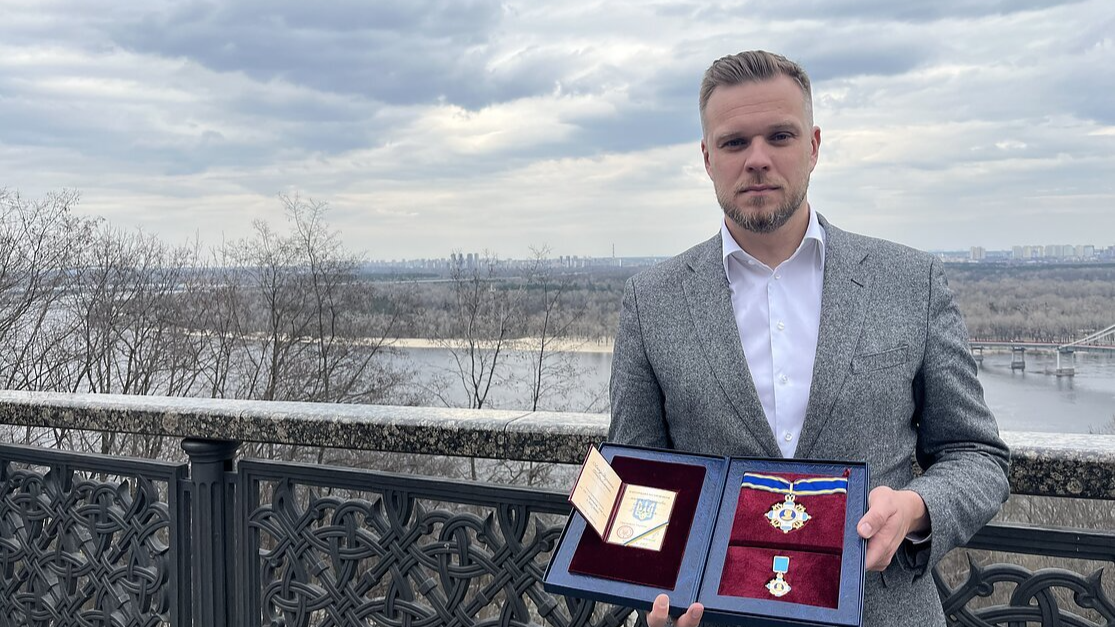Russian President Vladimir Putin on Sunday said that Washington’s plans to deploy longer-range missiles to Germany “liberated” Russia from certain nuclear agreements and that Moscow would resume production of medium and short-range nuclear missiles as a result.
“If the United States carries out such plans, we will consider ourselves liberated from the unilateral moratorium previously adopted on the deployment of medium- and short-range strike capabilities,” Putin was quoted by AFP as saying.
JOIN US ON TELEGRAM
Follow our coverage of the war on the @Kyivpost_official.
The class of missiles to which Putin was referring can travel between 300 and 3,400 miles and their production was supposed to have been stopped by the 1987 INF (Intermediate-range Nuclear Forces) Treaty between the US and the Soviet Union.
The treaty had endured, in theory, after the Soviet Union disintegrated and Russia was seen as less of a threat by the West, even if the US-led NATO continued to station Pershing missiles in Germany.
By 2019, after Russia had illegally annexed Crimea, both Washington and Moscow had withdrawn from that agreement. In August of that year, the US State Department claimed that the treaty had fallen apart because “Russia failed to return to full and verified compliance through the destruction of its noncompliant missile system—the SSC-8 or 9M729 ground-launched, intermediate-range cruise missile... Russia is solely responsible for the treaty’s demise.”

Russia Claims Capture of Two More East Ukraine Villages
BREAKING: Putin Celebrates Russia’s Navy Day in St. Petersburg Naval Parade.
— He Who Must Not Be Blamed (I/Me/Mine) (@MustNotBeBlamed) July 28, 2024
Meanwhile, Black Sea Navy Day Festivities Rely on Glass Bottom Boats to View and Cheer for Their Mighty Fleet. pic.twitter.com/IbfXSZERzi
More than two years into Russia’s full-scale invasion of Ukraine, US President Joe Biden’s administration agreed earlier this month to send similar cruise missiles to Germany, beginning in 2026.
Delivering his remarks at a Navy Day parade near Russian naval headquarters in St. Petersburg, Putin said that Russia “will take mirror measures in deploying them, taking into account the actions of the US, its satellites in Europe and in other regions of the world.”
Putin was speaking at one of several Russian venues for its Navy Day celebrations: Ships from the Chinese, Algerian, and Indian navies participated in the Main Naval Parade in St. Petersburg, the Institute for the Study of War (ISW) reported, while representatives from 31 states, including Azerbaijan, Venezuela, Vietnam, Cuba, Libya, Myanmar, Syria, Qatar, the United Arab Emirates, and South Africa, took part in events in St. Petersburg; the Russian naval base in Tartus, Syria; and the Baltic, Caspian, and North seas.
The ISW also reported that Russian Deputy Defense Minister Alexander Fomin met with the commander of China’s navy, Hu Zhongming, and discussed naval cooperation between the two countries.
Finland says it “accepts the fact” that the Russo-Ukrainian war is now within 120 miles of its own border
The president of Finland on Sunday re-assured its citizens that there was no threat to domestic security after Ukrainian airstrikes hit a Russian airfield 120 miles (192 km) from its border.
Over the weekend, Ukrainian drones reportedly destroyed a Russian Tu-22M3 long-range supersonic bomber-missile carrier at the Olenya airbase in Russia’s Murmansk region, near Finland’s northeastern border, as well as Dyagilevo airbase southeast of Moscow, which serves as a training center for the forces who operate those aircraft.
“The main message is that we have no cause for concern in Finland. We have the situation under control and are able to respond,” Finnish President Alexander Stubb said in an interview on broadcaster Yle.
“We have to accept the fact that Ukraine has to use all their assets to win this war, and this also means various strikes. So, Russia will continue to launch hybrid strikes,” Stubb said, adding that, after all, “it is not that far to fly from Helsinki to Kyiv.”
Stubb said that he had held talks with Finnish Prime Minister Petteri Orpo and Swedish Prime Minister Ulf Kristersson about the attacks as well.
Finland and Sweden are the two newest members of NATO, having joined in 2023 and 2024, respectively.
Ukraine reports it knocked out a Russian TU22M3 bomber at 300km away, 2 of the crew rescued, a 3rd is missing 1 is dead. #Russia #Ukraine #bomber #TU22 pic.twitter.com/uBXe2vOo59
— NAFO FELLA (@riffsong) April 19, 2024
Moscow reportedly resorts to cheap drones made of plywood and foam
Reuters reported recently that the Russian Armed Forces have begun to deploy inexpensive drones made of plastic foam and plywood for reconnaissance and long-range airstrikes, using them in at least five attacks over the past month.
The flimsy UAVs are also often used as decoys, a Ukrainian military intelligence spokesman told Reuters.
“They identify where our mobile groups are positioned, where the machine guns are that can destroy them. They’re trying... to get a picture of where all our air defenses are located,” the official, Andriy Cherniak, said, adding that using a SIM card, the kind used in smartphones, the drone transmits its camera images back to the operator.
The recce drones closely resemble attack versions and therefore draw the fire of Ukrainian air defenses, thereby revealing their concealed locations on the ground. They cost only about $10,000 to manufacture and are far cheaper than Shahed drones, for example.
Meanwhile, Reuters reported last week, Ukraine has begun using Artificial Intelligence (AI) to pilot some of its vast fleet of UAVs. Ukraine hopes a rollout of AI-enabled drones across the front line will help it overcome increasing signal jamming by the Russians as well as enable drones to work in larger groups.
“When you try to scale up (with human pilots), it just doesn’t work,” the CEO of one of the manufacturers, Swarmer, told Reuters in the company’s Kyiv offices. “For a swarm of 10 or 20 drones or robots, it’s virtually impossible for humans to manage them.”
Swarmer is one of more than 200 tech firms that have sprung up since Russia launched its full-scale invasion in 2022, with civilians from IT backgrounds developing drones and other devices to help Ukraine counter a much larger enemy.
You can also highlight the text and press Ctrl + Enter









